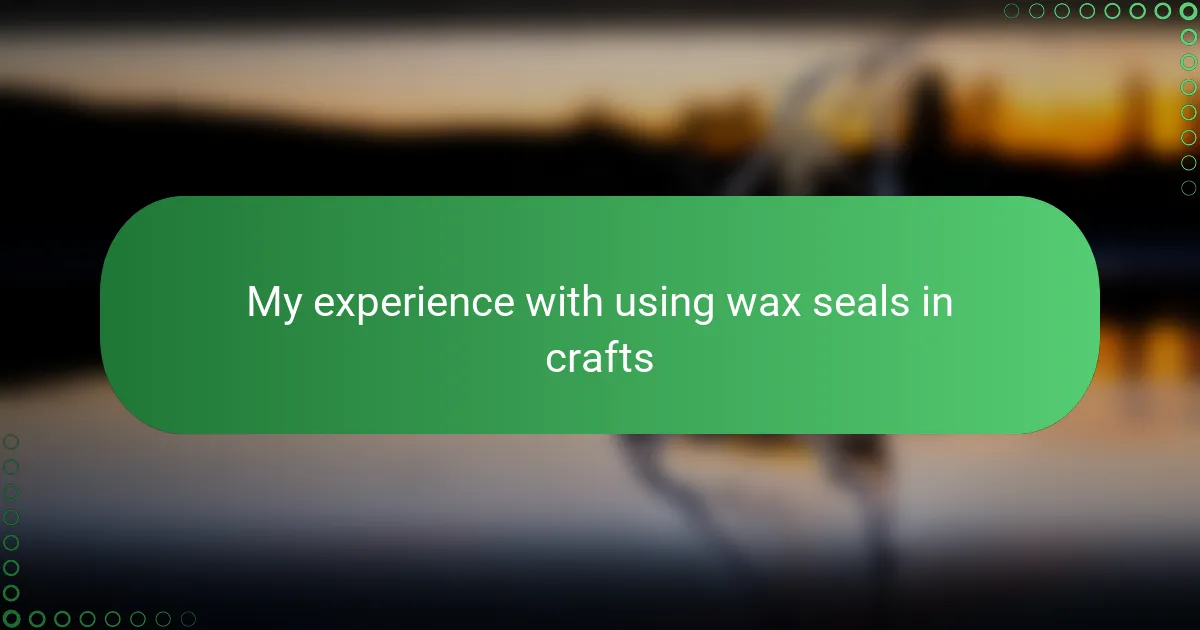Key takeaways
- Wax seals bring an elegant, personal touch to handmade crafts, evoking a sense of history and artistry.
- They enhance the tactile experience of projects, encouraging mindfulness and creativity during the crafting process.
- Key materials include sealing wax, a creative stamp, and a heat source; techniques involve careful application and cooling for best results.
- Wax seals can be creatively used on various crafts beyond envelopes, such as journals, bookmarks, and gift tags, adding a unique signature to each piece.
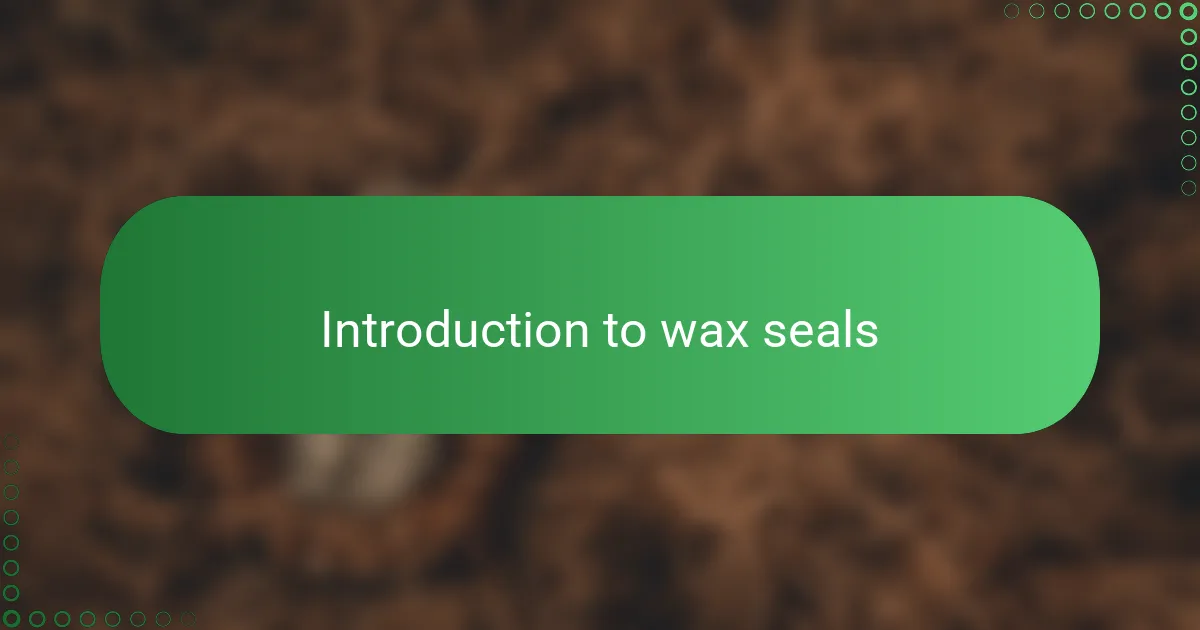
Introduction to wax seals
Wax seals have always fascinated me with their blend of history and artistry. They’re those little impressions made by melting wax and pressing a stamp, instantly turning any paper into something special. Have you ever wondered how something so simple can add such an elegant, old-world charm to a handmade craft?
When I first used a wax seal, I felt a surprising connection to centuries of letter writers and artisans who valued that personal touch. It’s like holding a tiny piece of time in your hands—a tactile signature that speaks louder than words. This experience made me appreciate the meticulous art behind every seal and why it still captivates crafters today.
The beauty of wax seals goes beyond aesthetics; they invite curiosity and creativity. What designs can you imagine stamping onto your projects? From initials to intricate patterns, the possibilities feel endless, and that’s what keeps me coming back to using them in my crafts.
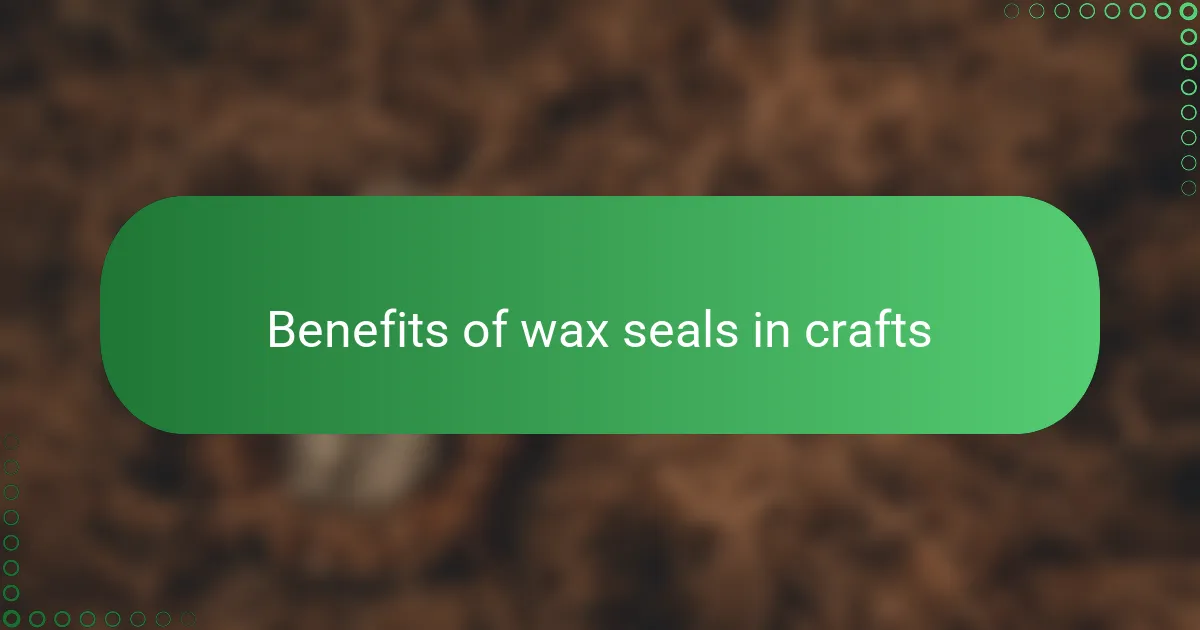
Benefits of wax seals in crafts
One of the biggest benefits I found with wax seals is how they instantly elevate the look of any handmade paper craft. There’s something deeply satisfying about that raised, glossy impression—it feels like the craft has been given its own unique signature. Have you noticed how a simple wax seal can transform a plain envelope or card into a keepsake that feels truly special?
Using wax seals also adds a tactile dimension to my projects that photos or flat prints just can’t capture. Every time I run my fingers over the smooth, warm wax, I’m reminded of craftsmanship and care, making the experience more intimate for both me and the recipient. It’s a small detail, but one that sparks connection and appreciation.
Plus, wax seals encourage me to slow down and be intentional with my creativity. Instead of rushing through crafting, I pause to choose the right wax color, stamp design, and placement. This mindful process not only improves the final piece but makes the whole crafting ritual more enjoyable and meaningful. Have you ever felt that when crafting something by hand? Wax seals definitely made me feel that way.
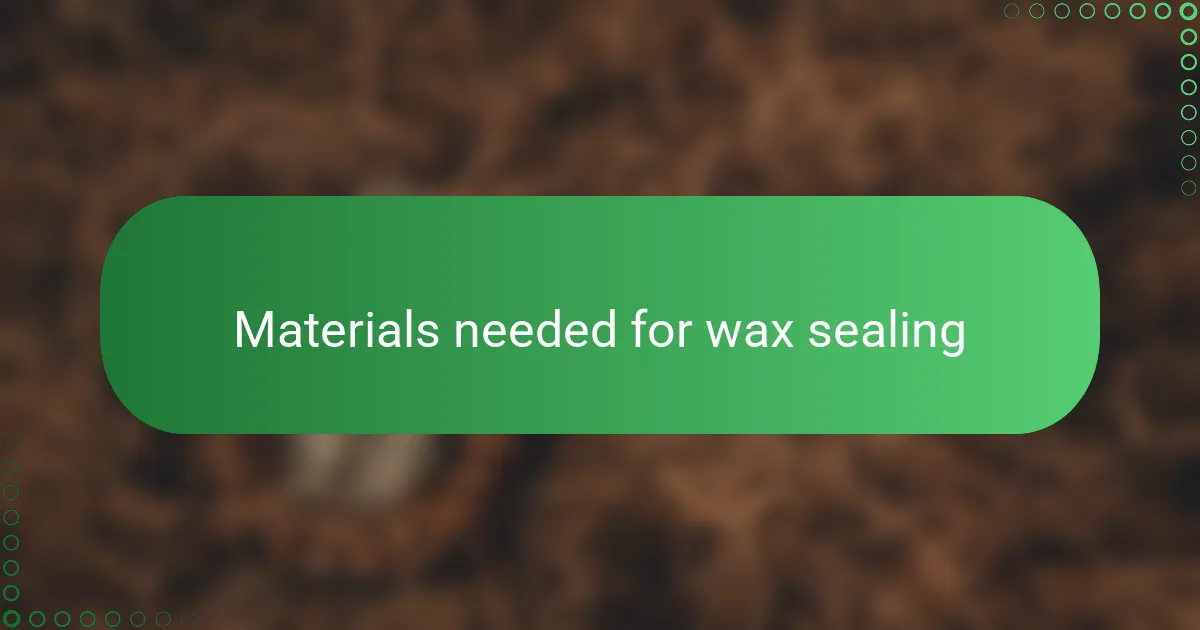
Materials needed for wax sealing
To get started with wax sealing, you’ll need a few key materials that I quickly realized are essential for a smooth and rewarding experience. First up is sealing wax itself, which comes in sticks or beads. I’ve experimented with different types, and I find the traditional wax sticks with a wick easiest to use, but if you prefer melting with a spoon, beads work just as well.
Next, the wax seal stamp is where your creativity really shines through. Choosing a design that resonates with you makes all the difference—I still remember the thrill of pressing my first initial into molten wax and seeing that crisp impression form. Don’t forget a heat source like a candle or lighter; it’s what melts the wax, so having something steady and easy to handle helps keep things stress-free.
One tool that often gets overlooked but proved valuable for me is a melting spoon, especially when using bead wax. It gives you precise control over the amount of wax, so you avoid messy spills—a mistake I happily learned from early on. Have you tried different tools to find what fits your style? It’s part of the fun that turns a simple craft into a personal ritual.
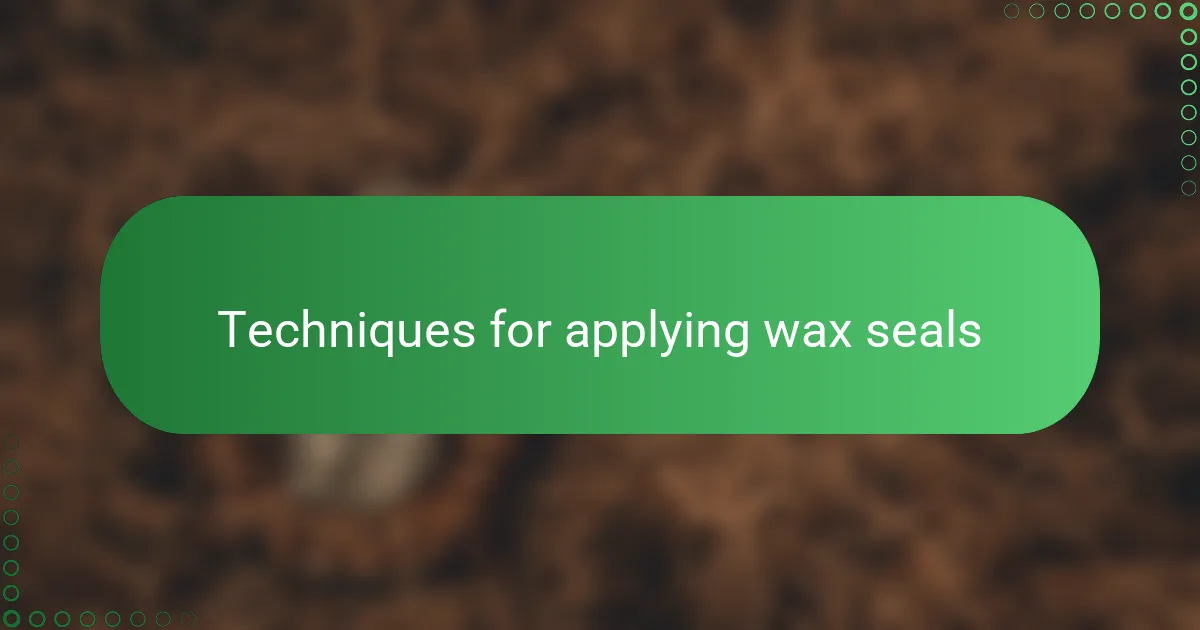
Techniques for applying wax seals
One technique I found works well is to let the wax drip directly from the stick onto the spot where I want the seal. It’s a bit like painting with molten wax, and I love that you can control the size by how much wax you let pool before pressing the stamp. Have you ever tried this? It feels almost meditative to watch the wax slowly form its own little island on the paper.
Another method I grew fond of involves melting wax in a spoon over a candle flame and then pouring it carefully onto the craft. This gave me better control over the flow, especially when working with delicate or small areas. At first, I was worried about making a mess, but once I got the hang of it, the precision and neatness made the final look much more polished.
Pressing the seal itself is its own little ritual. I always make sure to warm the stamp briefly—just enough so the wax doesn’t stick—and then press firmly but gently. I learned that holding the stamp in place for a few seconds before lifting it creates a deeper, clearer impression that I’m really proud of. Have you noticed how that slight pause can make all the difference?
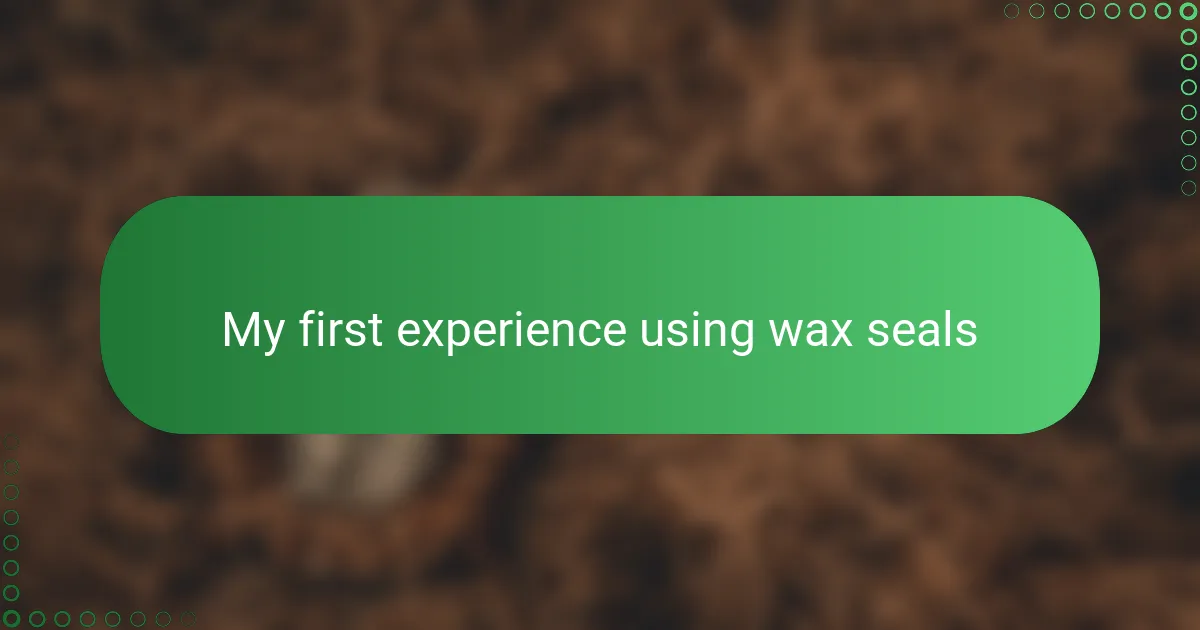
My first experience using wax seals
The very first time I tried using a wax seal, I was both excited and a bit nervous. I remember carefully melting the wax over the candle, watching it drip slowly onto my handmade card, and wondering if I would manage to get a clean impression. Did it turn out perfect? Not exactly, but that slight imperfection made it feel even more personal and authentic to me.
I was surprised at how calming the process felt, almost like a small meditation amidst the usual crafting bustle. Holding the stamp and waiting those few seconds for the wax to cool created a moment of pause I didn’t expect but really enjoyed. Have you ever found that a simple act can shift your mood this way?
That first seal wasn’t just about the end result—it was about discovering a connection to history and craftsmanship I hadn’t truly appreciated before. I felt proud seeing that glossy, raised emblem on my paper, knowing it was my own hands that created something both beautiful and meaningful.
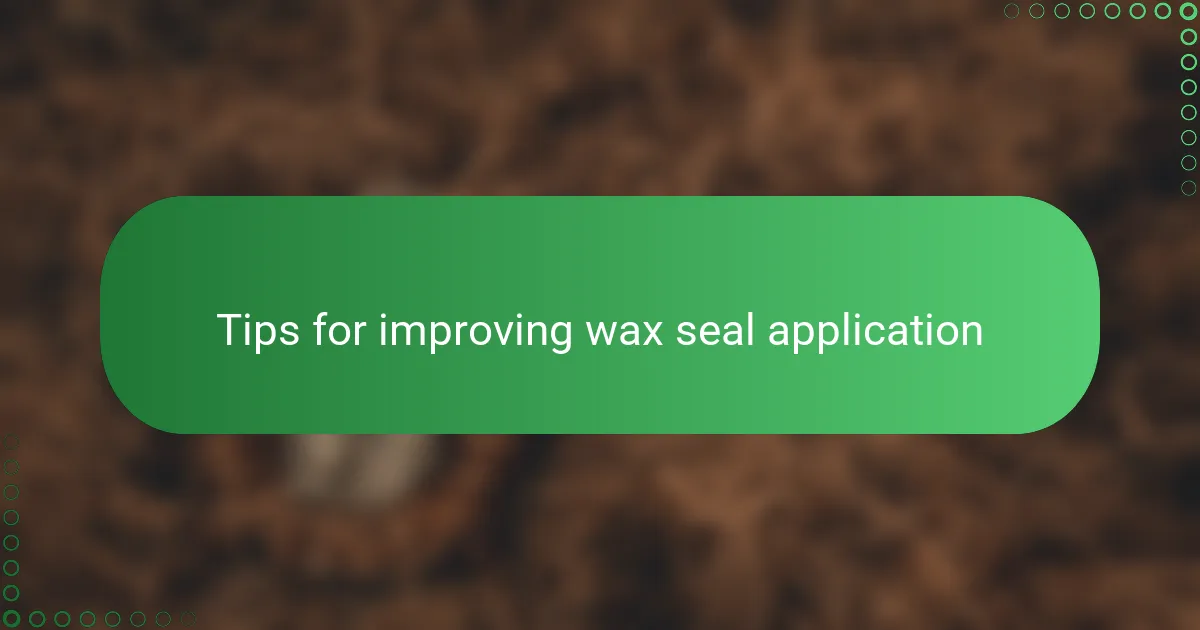
Tips for improving wax seal application
One tip I found invaluable is warming the seal stamp slightly before pressing it into the wax. This small step helps prevent the wax from sticking to the stamp and results in a cleaner, sharper impression. Have you ever struggled with your seal pulling away unevenly? Warming the stamp really changed my results from messy to professional-looking.
Another thing I learned is to let the wax cool just a bit before lifting the stamp. Patience here goes a long way; holding the stamp steady for about 10-15 seconds allows the wax to set properly, giving you a deeper, more defined imprint. Sometimes I get tempted to peel it off too soon, but I’ve noticed that waiting makes all the difference.
Lastly, I always recommend practicing on scrap paper before sealing your final piece. It took me a few tries to get a feel for how much wax to use and the right pressure to apply, and those practice runs saved me from ruining some of my favorite handmade cards. Plus, it’s a fun way to experiment with different designs and colors without any pressure. Have you tried this approach? I bet it would make your crafting experience even more enjoyable.
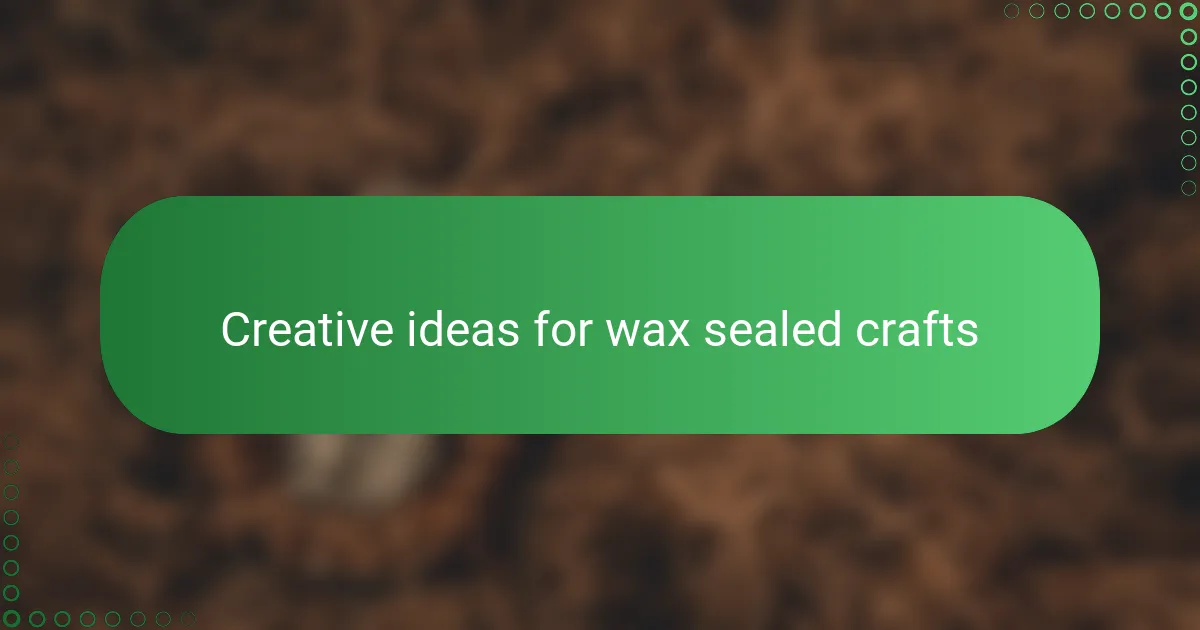
Creative ideas for wax sealed crafts
Creative ideas for wax sealed crafts really opened up once I started thinking beyond just envelopes and invitations. For example, adding a wax seal to a handmade journal or scrapbook page instantly turns it into a treasured keepsake. Have you ever tried sealing the closure of a tiny pouch made from handmade paper? It’s such a charming surprise that brings a rustic, personal touch to gift packaging.
One of my favorite ways to use wax seals is decorating bookmarks or gift tags. The seal acts like a little badge of honor for your craft, making it feel exclusive and thoughtful. Sometimes I mix colors of wax to match seasonal themes—imagine a deep red seal for winter holidays or a soft pastel for spring projects—that layering adds depth you don’t get with just ink or stickers.
Have you ever thought about using wax seals on fabric scraps attached to your paper crafts? I did this once, pressing a seal on a small linen swatch glued to a card, and it created a wonderful texture contrast that guests couldn’t stop touching. That tactile experience made me realize how versatile wax seals are, inviting so much creativity beyond the obvious. It’s these little experiments that keep my crafting exciting and fresh.
